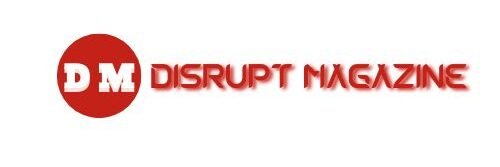Pharmacists are tasked with ensuring accurate medication dosage, which often involves unit conversions. One critical conversion is between milliliters (ml) and ounces (oz). This may seem basic, but for those preparing for the North American Pharmacist Licensure Examination (NAPLEX), mastering this concept is vital. The NAPLEX evaluates competency in pharmaceutical calculations, and converting between these units is a common calculation that can influence patient outcomes.
This article provides an in-depth understanding of the ml in an oz conversion, its importance in pharmacy, and practical strategies to ensure accuracy for the NAPLEX exam.
Why Unit Conversions Matter in Pharmacy Practice
Pharmacists deal with prescriptions and medication dosages that often come in different unit systems—metric and imperial. The most commonly used units in pharmacy are milliliters (ml) for liquid volumes, while ounces (oz) are more often used by patients in daily life, especially in the U.S.
Incorrect conversions between ml and oz can lead to over- or under-dosing, which in turn may result in adverse drug reactions, toxicity, or ineffective treatment. In a clinical setting, such errors could have severe consequences for patient health and safety. For this reason, NAPLEX places significant emphasis on proficiency in such conversions.
The Basics of ml to oz Conversion
To accurately convert between ml and oz, one must understand the conversion factor between these two units of volume:
1 fluid ounce (oz) = 29.5735 milliliters (ml)
For simplicity in many pharmacy-related contexts, the value is rounded to:
1 oz ≈ 30 ml
This approximation is typically sufficient for daily pharmaceutical calculations and is often used on the NAPLEX exam, unless a more precise conversion is explicitly required.
Examples of ml to oz Conversions for NAPLEX Preparation
Below are some practical examples that illustrate how this conversion might be tested on the NAPLEX:
Example 1: Converting Ounces to Milliliters
A physician prescribes 2 fluid ounces of a cough syrup for a patient. How many milliliters is this?
1. Use the rounded conversion factor: 1 oz ≈ 30 ml.
2. Multiply the number of ounces by the conversion factor:
2 oz × 30 ml/oz = 60 ml.
Thus, 2 oz is approximately 60 ml. This is a typical type of question that may appear on the NAPLEX exam.
Example 2: Converting Milliliters to Ounces
A prescription calls for 90 milliliters of a liquid medication. How many ounces is this?
1. Use the rounded conversion factor: 1 oz ≈ 30 ml.
2. Divide the number of milliliters by the conversion factor:
90 ml ÷ 30 ml/oz = 3 oz.
Thus, 90 ml is approximately 3 oz.
These simple calculations highlight the core concept of conversions that you will encounter on the exam.
Strategies for Remembering ml to oz Conversions
One of the most effective ways to ensure you can easily recall this conversion under exam pressure is to incorporate regular practice into your study routine. Here are some tips to help you master it:
1. Flashcards: Use flashcards to repeatedly test yourself on different conversion problems. Write a variety of examples on each card, converting both from oz to ml and from ml to oz.
2. Use Mnemonics: A helpful mnemonic to remember is that “Ounce has 5 letters, which are easy to remember, but ml (milliliter) is more detailed and has a higher number of 30.” This can help you quickly recall that 1 oz ≈ 30 ml.
3. Practice with Real-Life Situations: If you’re currently working in a pharmacy or handling medications as part of your clinical rotations, take every opportunity to practice converting doses in real-life scenarios. The more familiar you are with practical applications, the easier it will be during the NAPLEX exam.
4. Mock Exams: Simulate NAPLEX exam conditions by taking practice tests. Many online resources provide NAPLEX-style questions that include unit conversions. Review not only the questions you get wrong but also those you get right to reinforce your understanding.
5. Understand the Context: Many NAPLEX questions involving ml and oz conversions are framed within broader pharmaceutical problems, such as adjusting doses based on a patient’s weight or a specific concentration of a medication. Therefore, it’s essential to approach conversions as part of the overall clinical scenario rather than as isolated math problems.
Real-World Application: Pharmacists’ Use of ml to oz Conversions
After passing the NAPLEX and becoming licensed, these conversions are part of the daily workflow for many pharmacists. For example:
Compounding medications: Some pharmacies offer compounding services where pharmacists mix custom formulations of drugs. In such situations, precise conversions between ml and oz are needed to measure ingredients accurately.
Dispensing liquid medications: Many liquid medications prescribed to patients, especially children, require correct conversion between milliliters (for the prescribed dose) and ounces (if parents are more familiar with household measurements).
Patient education: Patients frequently need to measure out their medication doses at home. Pharmacists must be able to effectively communicate conversion guidelines, ensuring patients administer the correct amount of medicine.
Conclusion: Mastering ml to oz Conversions for the NAPLEX
Success in the NAPLEX requires strong competency in pharmaceutical calculations, including converting between milliliters and ounces. These conversions, though simple, are essential for ensuring accurate dosing in pharmacy practice. As such, they play an important role on the exam and in real-world pharmacy settings.
By practicing regularly, using helpful strategies like flashcards and real-life applications, and fully understanding the context of these conversions, you’ll be well-prepared for the NAPLEX and beyond.
Mastering the ml in an oz conversion isn’t just about passing an exam—it’s about ensuring patient safety and providing the best possible care as a pharmacist.



